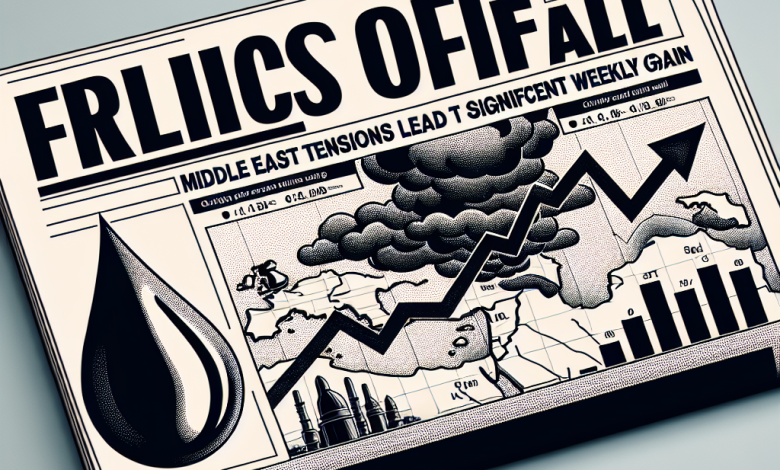
Oil Prices Fall as Middle East Tensions Lead to Significant Weekly Gain
Oil prices experienced a decline during Asian trading on Monday, retreating after a significant weekly gain driven by heightened tensions in the Middle East related to the ongoing Israel-Hamas conflict.
Positive U.S. payroll data contributed to last week’s rally, suggesting a more robust economy than previously anticipated. However, on Monday, some investors opted to take profits, leading to a decrease in oil prices.
Brent crude futures for December delivery fell by 0.5% to $77.64 per barrel, while West Texas Intermediate crude futures also dropped by 0.5%, trading at $73.32 per barrel. Both contracts had risen between 8% and 10% in the preceding week.
Trading activity was limited due to the Golden Week holidays in China, with markets set to reopen on Tuesday.
Focusing on Supply Disruptions Amid Ongoing Conflict
As the Israel-Hamas war shows little sign of abating, oil traders grew increasingly concerned about potential supply disruptions in the Middle East, marking a year since a Hamas attack on Israel reignited hostilities.
Recent reports indicated that rockets launched by Hezbollah struck Israel’s third-largest city, Haifa. In response, Israel targeted Hezbollah sites in both Lebanon and the Gaza Strip, following a substantial missile strike from Iran against Israel in reaction to its actions in the region. There are reports suggesting Israel may consider targeting Iran’s oil production facilities, a move that could significantly disrupt oil supplies and escalate the conflict further.
However, analysts from ANZ expressed a more cautious view, suggesting that the potential impact of the Middle East tensions on oil supplies might not be as severe as feared. They noted that the market could have enough supply buffers, particularly from the Organization of Petroleum Exporting Countries (OPEC), to counterbalance disruptions.
OPEC decided to maintain its current production levels during a meeting last week and reiterated plans to gradually increase production starting in December.
Monitoring Demand and Economic Indicators
Attention in the oil markets is also directed toward demand signals, particularly following a series of stimulus measures announced by China, the world’s largest oil importer.
Optimism regarding demand was bolstered by positive labor market data from the U.S. However, this set off a strong rally in the dollar, which subsequently put downward pressure on crude oil prices.
Investors this week will be looking for additional economic indicators from the U.S., with the consumer price index data expected to be released on Thursday.
 GOOGL
GOOGL  META
META 


